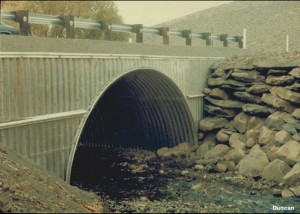Corrugated metal culvert structures with spans in excess of 40 feet can be used as bridges over streams and as overpass structures. They depend on soil-structure interaction for their stability. These photos show long-span culverts during construction and in service.
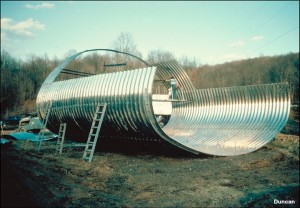
Large culvert structures like this one are shipped to the job site in pieces and bolted together at the site. They can be erected with light equipment and unskilled labor, but experienced supervision is essential.
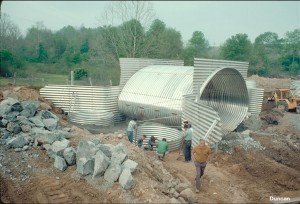
This aluminum culvert structure is ready to be backfilled. It has aluminum end walls and wing walls to retain the fill. The vertical bins will stabilize the fill and reduce the earth loads on the wing walls.
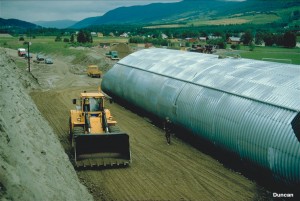
Because long-span culverts depend on soil-structure interaction for stability, intimate contact between the invert and the underlying soil, and good compaction of the backfill alongside and over the top of the culvert, are essential. Here a layer of sand backfill is being spread prior to compaction. Because the structures are unable to withstand much eccentric loading, the backfill must be brought up equally on both sides of the structure.
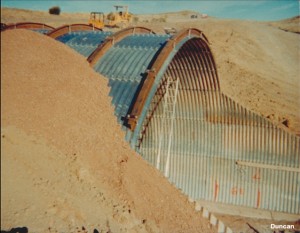
This photo shows the largest culvert structure ever built – a 60-foot span structure in Newfane, New York. It collapsed in 1974, a few days after this photo was taken, after a few feet of fill was placed over the crown of the structure. Fortunately, the failure occurred during the noon hour, when no one was inside the culvert, and there were no deaths or injuries. The investigation of the failure lead to improved design methods.
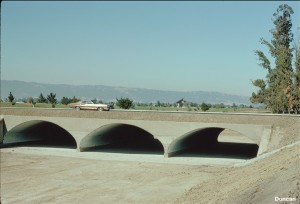
Here three culverts, side-by-side, provide a bridge across a river. These are “arch culverts,” without metal inverts. The haunches of the metal arches are supported on concrete footings, and a concrete invert prevents erosion of the stream bed in periods of high flow in the river.
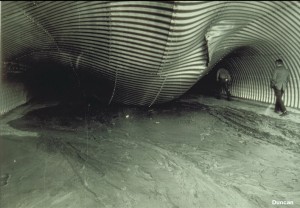
This photo shows the collapsed roof of a culvert structure. The collapse occurred when the contractor, working without supervision over a weekend, graded the fill over the top of the culvert so that it sloped from one side to the other. The culvert was unable to sustain the unsymmetrical load imposed by the sloping fill, and it collapsed. There were no deaths or injuries.

